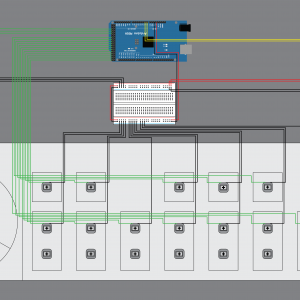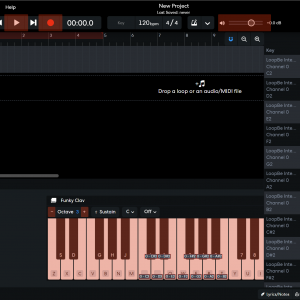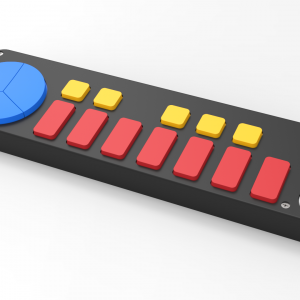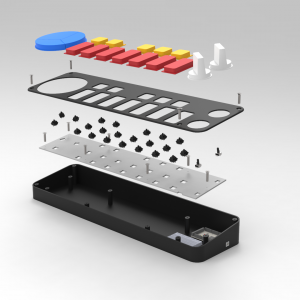Product Name: X-MIDI
Topic/Problem:
The ability to express oneself, whether through drawing, writing, clothing, music, or any other medium, plays a crucial role in an individual’s quality of life. Self expression forms the foundation of our personality and enables us to continuously discover more about ourselves, our passions, and our relationships to others and the world around us. Accessibility in music relates to the idea that anyone and everyone who desires to create music should have the opportunity and tools to do so. Throughout my research, the process of making music was analyzed, specifically focusing on how this process is impacted by a range of motor impairments.
The International Neuromodulation Society defines a motor impairment as “the partial or total loss of function of a body part, usually a limb or limbs” (Garcia, 2017). Some of the most prevalent motor impairments that affect people in the US include arthritis, essential tremor, Parkinson’s disease, stroke, and multiple sclerosis. These conditions stem from a variety of causes including inheritance, injury, disease, and environmental factors, and some observable commonalities between them include reduced mobility, weakness, tremors, partial paralysis, numbness, stiffness, and limited range of motion (Konzcal, n.d.). Treatments involving medicine, rehabilitation, surgery, or speech/ occupational/physical therapy can ameliorate symptoms of motor impairments; however, the impact of a disability cannot simply be measured through symptoms. If an individual’s fine motor skills are affected, they may not be able to continue participating in the activities and hobbies they enjoy.
Most digital music interfaces employ purpose-designed switches (keys, pads, buttons, sliders, etc.) that are not usually accessible. Through primary research, I found that manufacturers are designing interfaces with a one-size-fits-all model, and that users may be deterred from making music if they cannot fully engage with their devices, adjust tools to their liking, and find purpose and freedom in creating. Furthermore, many users stated that current musical devices are clustered, controls are small, and it is difficult to input data correctly and accurately. These issues surrounding accessibility, inclusion, and adaptability have raised the following question: how can we take advantage of the technology and resources that we have in order to improve adaptive music technology?
Solution:
By gaining an understanding of the challenges and needs of people with disabilities, adaptive music technology (AMT) and music itself can continue to grow and evolve. It is important for the device to serve the needs of users, to connect with a wide range of devices, applications, and software, and to enable the user to express themselves. To address these goals, the interface and control surfaces of the MIDI controller were redesigned. Important considerations included control surface density and scale, actuation force, ease of use, and visual and tactile feedback. The interface has seventeen (17) ergonomic pads and two (2) assignable knobs for manipulating parameters such as volume levels, effects, and virtual instruments. Twelve (12) of the pads resemble piano keys and can be digitally altered (octave up/down) to function as a full keyboard or to launch any desired sound, while three (3) of the pads are arranged in an alternative layout and can be used as a simplified keyboard, drum pad, or sample pad. Open source Arduino software and the Hairless MIDI to Serial Bridge allows musical information and MIDI signals to be easily customized, coded, and communicated between devices. A single USB connection powers the device and enables MIDI functionality so the X-MIDI can easily integrate with your hardware and music software. X-MIDI is intuitive, responsive, portable, and fun. This solution reframes music as an occupation of value, improves accuracy and comfort, encourages expression, and fosters community by providing people with the opportunity to record and share their work or to play live with others.
List of References:
Garcia, N. (2017, April 25). Motor impairment. International Neuromodulation Society. Retrieved November 15, 2021, from https://www.neuromodulation.com/motor-impairment
Konczal, E. (n.d.). Physical Disabilities. Rutgers. Retrieved March 3, 2022, from https://kines.rutgers.edu/dshw/disabilities/physical/1060-physical-disabilities




